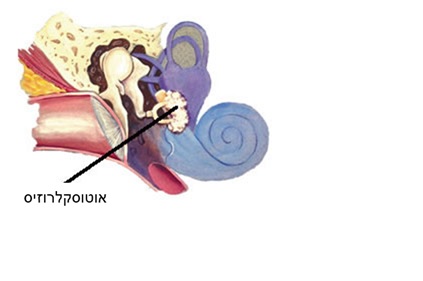
Otosclerosis
There are three tiny bones deep inside the ear, which vibrate when sound waves enter. They transmit sound waves to the cochlea (inner ear), which converts them into signals that are sent to the brain.
In otosclerosis, the stapes ("stirrup" bone) begins to fuse with the surrounding bone, eventually becoming fixed so it can't move. This means sound is no longer transmitted into the inner ear efficiently.
Symptoms of otosclerosis
Most people with otosclerosis notice hearing problems in their 20s or 30s. One or both ears can be affected.
Symptoms of otosclerosis include:
hearing loss that gets gradually worse over time
particular difficulty hearing low, deep sounds and whispers
speaking quietly because your voice sounds loud to you
finding it easier to hear when there's background noise (unlike many other types of hearing loss)
tinnitus (hearing sounds such as buzzing or humming that come from inside your body)
dizziness – though this is rare
Treatments for otosclerosis
Otosclerosis can usually be treated successfully with either a hearing aid or surgery. If your hearing loss is very mild, you may not need any treatment at first.
Surgery
The operation is performed under general anaesthetic(you're asleep).
A cut is made inside your ear canal, or occasionally above or in front of your ear, to access the bones inside your ear.
Part of the stapes bone is removed and a plastic or metal implant is put into the ear to transmit sound from the remaining bones into the inner ear. You'll be able to go home the same day or the day after.
Complications
Losing more or all of your hearing (in about 1 in 100 cases)
Altered sense of taste (usually temporary)
New or worsened tinnitus
Vertigo (usually temporary)
Facial weakness (very rare)

 FishArt
FishArt